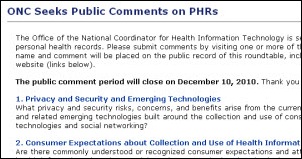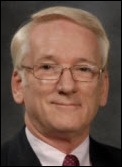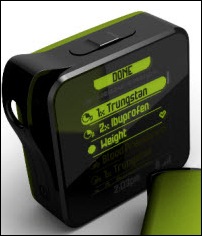"A valid concern..." Oh please. Everyone picks the software they like and the origin of that software is an afterthought.…
News 11/24/10
ONC invites the public to weigh in on personal health records as long as they do it by December 10.
A just-in report from Canada says that two hospitals there are talking to Cerner about outsourcing IT.
Central DuPage Hospital (IL), a long-time Lawson customer, says it has implemented Lawson Contract Management in less than four months.
Listening: new from My Chemical Romance, high-energy, defiant punk/pop with some nice hooks that provide a needed break from auto-tune singers and phony country warblers. Driving music.
St. Joseph Medical Center (TX) develops a 10-physician hospitalist program with Intercede Health, which includes the use of the company’s Order Optimizer software. It provides SaaS-based diagnosis-specific order sets and order set management tools, medication alerts, physician favorites, and a nine-week implementation time. That product is also available separately from a subsidiary.
In Ontario, Sunnybrook Health Sciences Centre partners with Telus Health Solutions to roll out a consumer health portal / PHR that will allow Telus employees to upload and enter medical information that providers can review. Its underlying technology is Microsoft HealthVault.
Happy birthday to Ed Marx, whose special day was Tuesday. You can post belated best wishes on Facebook.
Jobs on the HIStalk sponsor-only job page: Implementation Consultants and Project Managers, Director of Technical Readiness, Implementation Consultant. On Healthcare IT Jobs: Health Information Technology Support Manager, IS Senior Project Manager, Ambulatory EMR Implementation Specialist.
I received a nice response from AMIA President and CEO Ted Shortliffe about a reader’s question as to whether the organization will decline financial support from vendors who won’t go on record as not using “hold harmless” clauses in their customer contracts. He says AMIA’s vendor contracting task force received redacted contract copies and have no knowledge of how specific vendors are writing contracts. He mentioned that Senator Chuck Grassley had sent letters to vendors asking that very question, but he has not made whatever responses he received public. Ted says AMIA’s role is as an educator, not an enforcer, so it made strong recommendations. I can see that point of view: other than Epic, most vendors aren’t going to walk away from business if the prospect insists on removing clause like that one. Nobody makes customers sign on the line which is dotted.
Speaking of that, I’m amazed that hospitals allow vendors to provide the first draft of a contract, loading it with vendor-friendly boilerplate and making sure to look astonished and hurt at any suggestion from their “partner” that it be changed before they hand over their large check. Job #1 is to create your own contract draft and give it to the vendor as the starting point for negotiation. I’m thinking of starting a telenegotiating service where I whisper electronically in the ear of hospital and practice IT people, telling them what to say and how to use classic negotiating techniques to their advantage. Customers are always complaining about the bad deals they got without accepting blame for taking what was offered without a whimper. In negotiation, 80% of the money on the table is going to be split equally between the two parties. When you’re negotiating, you’re fighting for a bigger share of the remaining 20%.
Investment bank TripleTree will host a Webcast about cloud computing in healthcare on December 1. The panel includes top executives from Castlight Health, SCI Solutions, MedVentive, and Connextions. Two of those four are HIStalk sponsors (SCI and MedVentive), so tune in and support them if you’re so inclined.
Nuance announces Q4 numbers: revenue up 17.7% to $310 million, EPS $0.01 vs. $0.02 after some accounting adjustments.
British company Cambridge Consultants announces the Minder smart device, which transmits medical data in real time to EMRs. It can also receive checklist information from providers to instruct patients. Technologies used: Bluetooth, Wearable Mobile device hardware, accelerometer, the Continua-compliant Vena platform, and input devices that include a blood pressure cuff and scale.
iSoft’s former auditors face misconduct charges over – what else – allowing questionable recognition practices.
Odd: Healthmed Services, which has staked its fortune on some kind of iPad-to-desktop communication tool for healthcare use, floats a bunch of press releases touting its vaguely described agreements with Facebook and Google. Its also-vague Web site features a video of President Obama and a lot of generic information about the vast healthcare IT market it plans to conquer. The company today announced a development agreement with Veritas Software Systems, which might sound like the big backup system vendor unless you recall that Veritas was acquired by Symantec in 2005 (and its name was actually Veritas Software Corp. – this particular company has no Web presence that I could find). It also announced this week a new Web-based practice management system called HealthTrac, with no details whatsoever. What’s really newsworthy about the company: (a) it just filed an 8-K disclosure that it paid a company $600K to develop its flagship product, armed only with an oral agreement, but that company is holding them up for more money; (b) the company’s stock was being pumped and dumped by cocaine-smuggling New York longshoremen (note this “monster pick” that ran up the price 93% on Monday, with 42 million shares changing hands); and (c) its SEC filings from August indicates that the company had zero revenue, had no expectations of any revenue, and was down to its last $52 in the bank. I Googled its listed address and came up with the Las Vegas building above from Google Maps, which I assume is a mail drop. The address it uses for its SEC filings is a one-person virtual office in California that’s currently for rent for a minimum period of one night (that photo is above, too). The CEO quit in August and the CFO was replaced. Shares are at $0.08, with a market cap of $14 million. Maybe I’ve finally found that HIT vendor who’ll have me on their board, enjoying the corporate headquarters any time I can come up with the daily rent.
Odd: Spirit Airlines refuses to give a surgeon’s pregnant wife water while their overheated plane is sitting on the tarmac, offering instead drinks for sale. He makes a scene and makes vague references to terrorism, his son kicks a flight attendant in the groin, the flight crew kicks the family off, the surgeon is suing for $11 million.
Attachmate acquires Novell for $2.2 billion, if there’s anyone left who cares. A Microsoft subsidiary chips in $450 million to get a bunch of Novell patents, leading to speculation that their interest is either in suing other companies or perhaps porting .NET to Linux.
I think we probably won’t have enough news to be worth posting new issues of HIStalk, HIStalk Practice, and HIStalk Mobile through the holiday, but I’ll have the usual Monday Morning Update. Inga has written a sweet Thanksgiving piece that I’ll run on HIStalk Practice and I may write one myself for HIStalk since we are both sentimental, dreamy-eyed romantics anxious to give our BFF readers a clingy holiday hug, just like the watch-those-hands Uncle Bill on the porch after a little too much spiked eggnog and cheap Thanksgiving wine. We’ve been ultra-busy with new sponsors, interviews, and party planning, so we will enjoy the short break. if you’re headed off to RSNA this weekend, travel safely and make sure to crack up your fellow airline passengers in the security line by loudly delivering a few carefully rehearsed jokes about TSA’s full-body scanners. Have a wonderful Thanksgiving.
HERtalk by Inga
Fun fact: at Cerner’s on-site cafeteria in Kansas City, color-coded serving tools prompt employees to notice good food choices. Green handles indicate a great choice (think broccoli), yellow handles suggest you might want to limit your portion (pimento-stuffed olives), and red handles (burgers and fries) mean you might want to make time for a workout after work (that is, if you can sneak out of the parking lot without Neal noticing).
Austin Regional Clinic (TX) implements Webmedx’s Enterprise5 platform for its outsourced transcription and speech recognition services.
CMS will give providers online tracking capabilities to check the status of their Meaningful Use incentive payments. The payment information will be available online once a provider is notified that they have met Meaningful Use requirements.
In an article profiling Epic, the story’s author notes that the company rarely advertises and doesn’t encourage media articles. Apparently the reporter had difficulty getting answers to some basic questions. After several phone and e-mail attempts, she was basically told no one was available to assist. Finally an Epic spokesperson told her that the company’s “managers and leaders were too busy to speak with newspaper reporters, even if the reporter in question was writing a major feature story about them.” I bet lots of companies wish they were that busy.
Meanwhile, another local publication points out that Epic makes financial contributions to over 100 nonprofits. The company also donates older computers to local school districts, supports the local public library, and hosts area high school graduations in its auditorium.
The US Bid Committee announces that Cerner is now an official partner in efforts to bring the FIFA World Cup to the US in the 2022. The committee chair says that Cerner has “clearly demonstrated” its commitment to the sport “in their innovative web-based health surveillance system for professional soccer players in the United States.” I was aware of the Cerner / Kansas City Wizards connection but didn’t realize Cerner also has an “athlete-focused” solution that was launched earlier this year and is now used by all 16 Major League Soccer teams.
Microsoft’s Peter Neupert says the company is abandoning efforts to make HealthVault profitable because of the complexity of the country’s health system. Neuport told the Financial Times that HealthValult’s benefit to Microsoft was simply to increase the brand relationship” by raising Microsoft’s image with customers as “important, critical and trusted.” Compare those thoughts to what Neupert had to say at HealthVault’s unveiling three years ago:
The way we make money is by encouraging online activity, and through our search application.We know that search is a big business, it’s an important tool, it’s where consumers are today. And by growing the overall search market and delivering more value to consumers, and delivering a better end-to-end search experience, that’s where we can make our money to support this effort.
Florida doctor Arturo Carvajal sues a restaurant after injuring himself while consuming an artichoke. The doctor claims the restaurant failed to “explain the proper method of consuming an artichoke.” Carvajal, a brain surgeon, ending up eating the entire outside of the vegetable, which caused him "severe abdominal pain and discomfort," ultimately resulting in "disability, disfigurement, mental anguish," and "loss of capacity for the enjoyment of life". OK, Carvajal really isn’t a brain surgeon, but I thought that sounded funnier than family practice, which is his real specialty. Regardless, I hope he has better luck eating his turkey and that someone advises him not to eat the wishbone.
Sponsor updates:
- NextGen Healthcare partners with Scimage to release a jointly develop the NextGen Medical Image Integration Module. The new module will give NextGen EHR ambulatory users the ability to view images produced by any imaging modality or PACS from within the NextGen EHR.
- Eight MEDSEEK healthcare clients win a total of 14 awards at the Strategic Communications eHealthcare Leadership competition. The program recognizes outstanding health web sites.
- Consulting firm North Highland hires Rebecca Whitehead Munn and Brent Holman as account managers. Munn was formerly the SVP of sales and marketing for Consensus Point. Holman comes from a large for-profit healthcare system (which I assume is HCA since both Munn and Holman are based in Nashville).
- North Sunflower Medical Center (MS) will deploy a suite of McKesson products, including Paragon HIS, Practice Partner EHR, and RelayHealth claims and eligibility processing solutions.
- Surgical Information Systems says its SIS Version 5 is the first perioperative system to be certified as a modular EHR.












Disclaimer: I own MSFT stock.
It’s not for their healthcare business. I’ve met with their senior healthcare people on numerous occasions over the past few years and their team just gets bigger and bigger, but the results are the same.
I have no idea what their healthcare business is, other than selling SQL, Office, and Windows to hospitals and vendors. HealthVault has been practically non-existent, their Connected HealthVault Community (great name, huh?) is missing so much (including a sensible solution strategy) that it has been a bust, they don’t even mention the health search company they bought anymore (strategy flamed-out I guess), and Amalga, which has had some success, is moving oh so slowly and the opportunities for it to play a significant role in healthcare are evaporating. No one in the HIT world is wondering “what is MSFT up to?” Part of the issue is that MSFT doesn’t want to compete against any of the big vendors directly, but if you avoid all those solutions, what is left to go after? If anything, the big vendors, with the exception of Epic, are all weak and Microsoft could pull together a few smaller vendors and solutions, perhaps all SaaS-based (which none of the big vendors are), and create the healthcare platform for the next decade or two. Better yet, those small companies would bring a mean, lean, and hungry attitude to the business, which it sorely lacks. But until Microsoft gets some balls and stops asking CMIOs and CIOs for product ideas (useless, in my opinion), they’ll just muddle along.
Maybe I should sell MSFT, but that Windows is a cash-cow business…
On your Cambridge Consultant post, the Vena platform is pretty interesting on what connects to it. I post about a lot of their devices and some get sold to pharmaceutical companies as drug delivery systems. You have to see what I call one of the most “wicked devices” out there that connects, the blue tooth inhaler. A couple years ago when they came out with this I sent up to the folks at HealthVault and asked they were going to connect this little goodie and they even freaked out a little as 2 years ago the technology was not where we are today:)
I’ll leave a link to their video, which was made in the UK so don’t freak out too much when they show how it could easily send the information to your health insurance company. I made some comments to on the fact that if one were to end up in the ER room and was a user of such device, would your claim be analyzed something like this: we sent you 3 text messages to remind you to inhale, 2 emails and you were still 2 hours late and the device blinked steady for 2 hours too, so thus due to being late on your inhale schedule your incident at the ER room was your fault and you were not compliant so does the claim get denied:)
I could see use for clinical trials but on a regular basis we need some additional participatory sensing results out of UCLA to make sure such devices are not too disruptive and are fair. It transmits in HL7 standards.
What should happen here is collaboration if the government wants to take their GPS inhaler software and device that they tout and put it all into one:) You have to watch the video for the full effect on this one. The inhaler works with “Minder” device you have pictured above.
http://ducknetweb.blogspot.com/2010/11/minder-wireless-device-connects-to.html
RE: Cerner’s onsite cafeteria. Actually, when I visited Cerner’s campus, they also had a nice on-site workout facility for employees. So you can burn your burger calories AND keep your car in the parking lot late, which presumably ought to keep management happy on multiple fronts.
It’s nothing more than a pipe dream to think that companies like Microsoft, Google, Apple, or Oracle would actually be interested in buying up an EHR vendor. It only reinforces how insulated, disconnected, and ignorant of the technology world health informaticists really are. Apparently we haven’t learned from GE and Siemens that great engineering companies can fail at HIT because they don’t know the health care part. EHR vendors, especially the current darling Epic, are running on archaic technology; for any large, reputable tech company to buy one of these vendors would require throwing most of the code out and starting from scratch.
[From Mr. HIStalk] Patently untrue. Oracle bought Peoplesoft, COBOL and all. Microsoft bought Great Plains and I doubt they rewrote it. Tech companies don’t just buy cool technology widgets – they’re looking for anything that has profits, market share, and the chance to sell into their customer base.
For companies that have no health care expertise whatsoever, you can see the disaster happening before it even starts. What’s ironic is the one vendor which actually reaches out to mainstream tech companies, McKesson, is villified as incompetent on here.
[From Mr. HIStalk] Check the KLAS scores. Are you suggesting that users can’t be trusted to evaluate the products they use every day? Or to judge bolted-on integration from a cavalcade of mixed-technology acquisitions?
Even Allscripts/Eclipsys has reached out to Microsoft in the past, and lately they’ve become a bit of a joke on here as well for daring to mention open source.
[From Mr. HIStalk] Allscripts didn’t mention open source — the Forbes reporter did in talking about their apps store. The press release she wildly misinterpreted does not contain the words open source.
Meanwhile, Epic, which is nothing more than a punchline to real programmers,
[From Mr. HIStalk] Obviously you have a definition in mind of “real programmers” that may or may not be universally held.
is glorified as some sort of above-the-rest standard to which all EHRs should be held. It’s always interesting to see how many obscure Epic press bits get posted here, like the 1 paragraph blurb from a local Madison magazine about how they give to charity (as if no other company makes charitable donations)
I particularly liked that Northwest Indiana article on Epic; seems the journalist in the last half of the article really starts to understand what Epic is all about. It’s really laughable that the same people who tout Epic as being the industry leader lament that fact that Microsoft and Google have yet to break into the industry.
[From Mr. HIStalk] Epic is the biggest thing going on HIT, MUMPS or not, like it or not, Microsoft or not. Once again, check the KLAS scores of the hospitals and practices using it and the clinical competence of the places buying it.
Even the blog author, Mr. HISTalk, spent more time disparaging the recent mHealth conference than reporting back to all of us what sorts of innovative ideas intelligent people from outside healthcare are trying to apply to our field.
[From Mr. HIStalk] I told you what I saw there. The innovative ideas there were mostly unproven clinically, financially, and technically. They addressed global and population health, not what most people would call “healthcare.” The technology involved primitive SMS messaging for the most part.
We as a health IT community need to break out of our own little box that we’ve put ourselves into and see a bigger technology world. Otherwise, we’ll just keep on dreaming.
[From Mr. HIStalk] We need to stop obsessing over the technology and instead focus on its outcomes. Patients don’t care what programming language you write applications in or how cool Microsoft thinks your vendor is.
I hate to clutter your mailbox, but wanted to let you know how much I enjoy your writing (and usually your music choices).
Happy Thanksgiving.
[From Mr. HIStalk] This is the good kind of mailbox clutter! Thanks and Happy Thanksgiving to you, too.
AMIA has not signed the ethics pledge circulated by the Society of Medical Specialties. In other words, this “educational” group may have conflicts. Otherwise, why would the AMIA BOD and CEO not sign it?
Mr. H’s comments are spot on! Surveys via KLAS prove that end users know who is doing good things for them even though their is some bias because vendors supply their customer lists to KLAS. We all need to focus on what will work best in the clinical practice field, and do the collaborative testing with customers to prove the solutions worth to practitioners who will use them daily. Only the biggest and best suppliers in the healthcare field have the capability to provide the resources necessary to bring new technologies to the healthcare customer base that will be used to improve the efficiency of care. Smaller companies can succeed but will need to be acquired by larger firms to gain any scale in this business. TPD!
Comedy Hour Says:
It only reinforces how insulated, disconnected, and ignorant of the technology world health informaticists really are.
That term “health informaticist” has been hijacked by people who are no more “health informaticists” than I am Mata Hari. An analogy would be for someone with no medical training other that first aid for kids adopting the description of themselves as “pediatric neurosurgeon.”
I thin you meant “healthcare IT producers.”
Mr Histalk wrote:
[From Mr. HIStalk] We need to stop obsessing over the technology and instead focus on its outcomes. Patients don’t care what programming language you write applications in or how cool Microsoft thinks your vendor is.
Indeed. They simply care about not prematurely ending up in a pine box – as my mother almost did thanks to an ultramodern EHR.
Re: AMIA
AMIA is indeed an educational organization, not an organization that delves deeply into affecting matters of public policy through political means.
On the other hand, they went out of their way not to rock the boat. For instance, they were essentially tolerant of, but unsupportive of, my early efforts and the efforts of others to expose some of the downside issues of poorly done health IT and poorly managed implementation projects that I started to write about in 1998-1999. (Even after my own mother’s HIT-related cerebral hemorrhage earlier this year, I was still hearing comments from AMIA leaders that HIT-related patient events were “anecdotal.”)
Ironically, AMIA has now offered a Board Position Paper supproting many of those views, “Challenges in ethics, safety, best practices, and oversight regarding HIT vendors, their customers, and patients: a report of an AMIA special task force (click for free PDF).
One could argue that was under a different set of academic leaders, however,
One could also argue that academics in medicine have more justification to use their platforms for reform, as compared to academics in other fields who are loud voices in (usually leftist) politics.
as my mother almost did thanks to an ultramodern EHR
You still haven’t offered any evidence to support this claim.
For the record, I do think KLAS is completely unscientific. How an evidence-based field like medicine can accept a completely subjective analysis like KLAS is beyond me. After all, even Kim Jong Il has a 100% approval rating, so his “end users” must feel that North Korea is certainly headed in the right direction, right? President Obama’s ratings are somewhere around 40%. People in our democracy seem to be much less satisfied than people in an autocracy, so that autocracy must be superior, right? If we chose political systems based on approval ratings (i.e., KLAS scores), we’d all have crazy autocrats for leaders.
Furthermore, here’s an example of why it is the technology that matters:
Right now, from my bank’s webpage via secure access from any computer anywhere in the world, I can check my accounts with checking, savings, and credit card all on a single screen; I also can have that same account pull together all my outside financials like other credit cards, mortgage, and stock accounts to get a real-time accounting of my finances. I can make online purchases with my credit card and instantly see the pending charges on my card account. I can make instant bank transfers to pay my credit card and other bills from this same account, and instantly transfer money to my investment account. I can then log into my investment account at a completely different company, again web-based and secure from any computer, and see not just my transferred funds, but real-time stock quotes with performance graphs and linked news, as well as a real-time analysis of my stock performance and portfolio value. I can then, from that same screen, buy and sell stocks/bonds/commodities in real time, from multiple markets around the world, with literally a click of the button. I can make rapid, informed decisions using the technology available to me.
This is today, this is real, this is one of the largest banks in America, and nobody in health care can do anything remotely close to this with actionable information exchange. I can manage my bank account like this, but just try getting labs, x-rays, med history, clinical documents, and living will documentation together for a single complicated patient to manage their care appropriately during a hospital visit. Lack of actionable information with a timely exchange does indeed have the potential to kill people. The goal of using technology in health care should be, in my opinion, not just to automate the health care world but actually make it better. We do ourselves and our patients a disservice, in my opinion, by accepting inferior technology on the grounds that it’s easy to use and maintain.
Now, time to prepare to overdose on turkey
Spam Police Says:
You still haven’t offered any evidence to support this claim.
Let’s just say. not publicly.
Anyone can email me for the reasons. Email address is on my site here.
#12 typo in link.
that link should be this.
Let’s just say. not publicly.
Your claims certainly have been made publicly. Until the evidence is provided publicly, it doesn’t exist.
Comedy Hour, why can’t MUMPS be used to do all the things you describe?
Spam Police Says:
Until the evidence is provided publicly, it doesn’t exist.
All in good time.
You have an email address which can be used to satisfy your curiosity. Either use it, or back off. Others already have.
@Comedy Hour – no need to quit your stand-up job. Comparing the single numerical data type used in financial transactions to the multi-typed/multi-valued data in health care is a sure sign that you likely have no clue what you are talking about.
@Spam Police – Banking is the other sector other than health care where Mumps is heavily used.
http://www.intersystems.com/casestudies/cache/investment_bank.html
It is not about which technology, it is about how to use technology properly
Eddie
Not sure you understand the complexity of financial transactions. You’re not dealing only with numbers – there’s a lot of information attached to those numbers in the exchange of information.
You are indeed correct that Intersystems markets itself in the financial world and several large, mostly European, banks use MUMPS, mostly behind the scenes in context of high volume trading. The 2 institutions mentioned above do not use it, and are industry leaders as well as leading edge in their use of information technology.
I think comedy hour is right on. I think EPIC is like the Emperor that wore no clothes. My father died at CCF of cepsis, which came from being in ICU, he was in ICU because he couldn’t breath, after his non invasive surgery, which was done to drain fluid from around his lung, which is called plueresy.
For 2 weeks they tested him and found nothing. Anxious, wondering what all the specialists were doing I asked the Attending what the specialists concluded? his answer “I will know in 3 days”. Why? – transcribed notes” “Don’t they use Epic?” “No – none of the specialists will use it.” “How many specialists are there at CCF? ” “About 700. So 70% of the doctors won’t use it yet hospitals are buying Epic based on your use?
They asked if I wanted to do an autopsy. They said he died of cepsis. I said try again – what caused the Pleurosy? 1 month later, I was told he had a form of Leukemia that he probably picked up after his hip transplant that aslo occured at CCF. They never knew this until after his death.
So Comdey Hour – don’t ever stop until someone listens – it is really that important.